Low-code process development
with the Eximee platform
To model processes and manage process flows, banks typically use BPM platforms. However, commercially available tools do not provide sufficient solutions to deliver non-process elements, particularly those related to the user interface, data processing, or business logic. The Eximee low-code platform fills this gap and offers the possibility of managing these elements using a low-code approach.
Process modeler
Draw processes like a flow chart using the BPMN 2.0 Modeler. Analyze, design, and share processes with all stakeholders, combine them with other Eximee platform elements, and implement them using a single tool.
BPMN 2.0 as a standard
Since the Eximee low-code platform uses a proven BPM engine, you can develop sophisticated and reliable processes. When defining a process, you have all of the BPMN 2.0 elements at your disposal, including subprocesses, gateways (exclusive, inclusive, parallel, event-based), events (message, timers, errors, signal, etc.), and more.
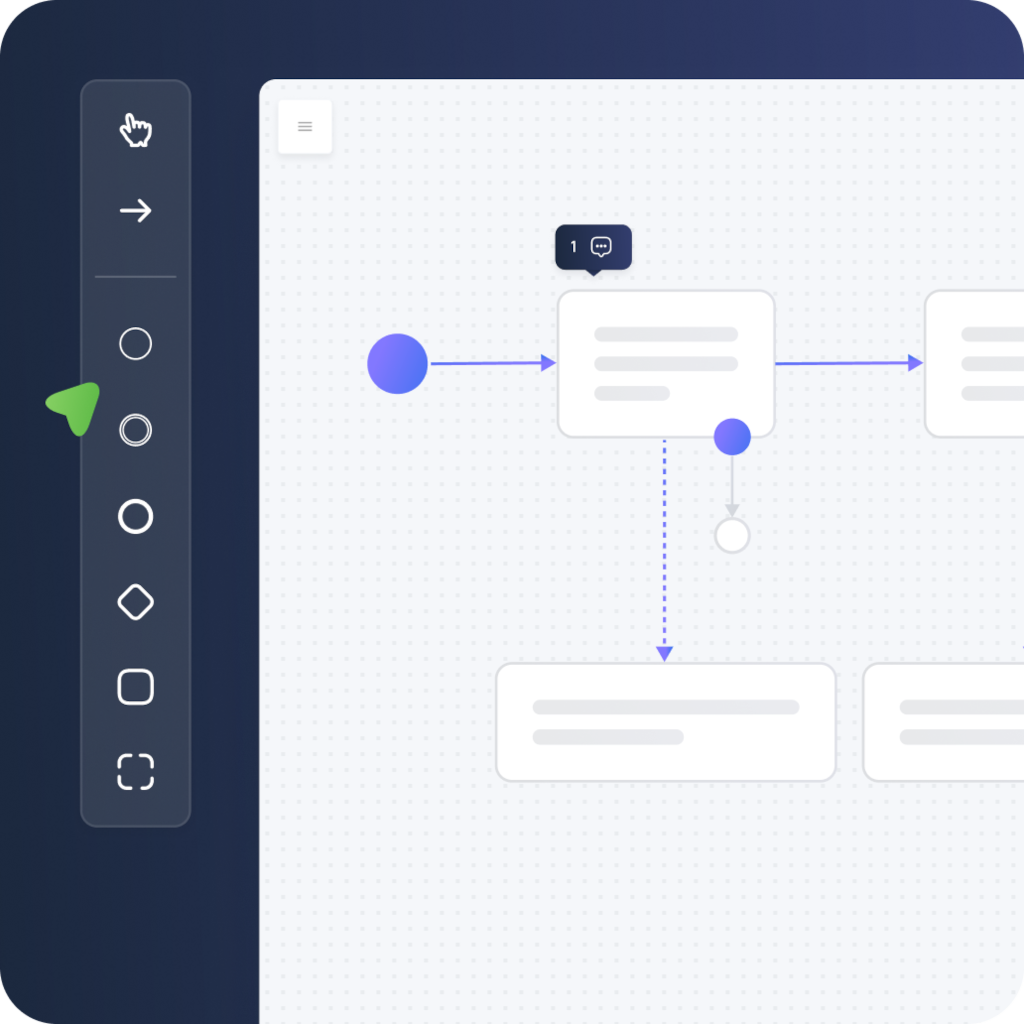
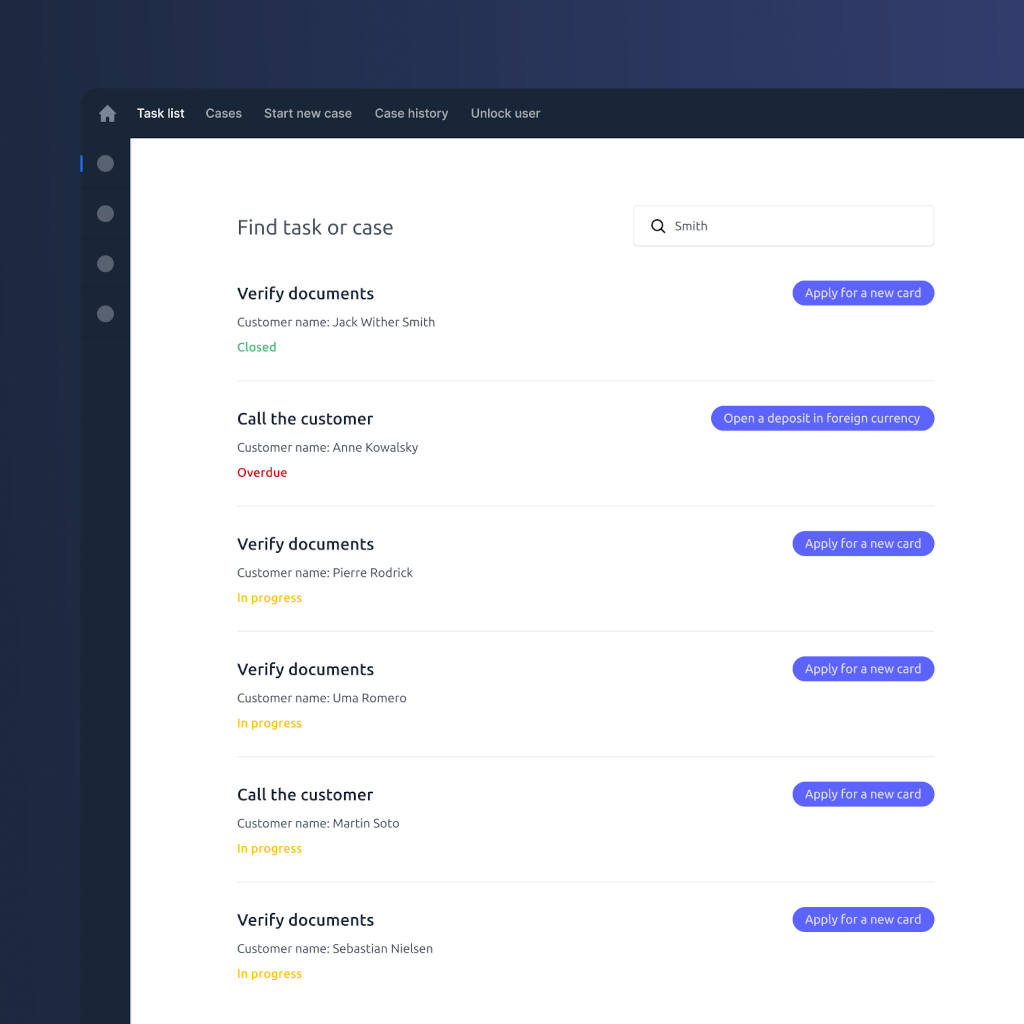
Extension of standard BPMN 2.0
tool capabilities
The BPM platforms available on the market do not support the development of advanced business solutions without the need to implement hard-coded custom applications.The Eximee platform effectively solves this problem by providing the tools and capabilities such as:
- comprehensive centralized process data management
- sophisticated user task forms
- a framework for handling automated tasks and integrations
- low-code defined service tasks written using the Eximee Script Code
- context-aware, configurable case lists and case overviews
Integration with Camunda
The Eximee platform integrates with proven BPM engines, including the workflow engine provided by Camunda. The Eximee process creation is performed using the BPMN Modeler. It offers advanced features for designing and implementing automated processes and workflows based on the internationally recognized BPMN 2.0 standard.
Can Eximee integrate with a workflow engine other than Camunda?
Yes. The Eximee low-code development platform can integrate with any BPM engine that provides external API.
Subprocesses
Subprocesses are ready-made processes that solve specific problems or deliver necessary functionalities using the process definition, automated business process steps and user tasks. They are independent of the business processes they are used in. Since there is no need to analyze, model, test, and integrate repetitious elements, subprocesses significantly speed up the creation and implementation of processes and enable the standardization of recurring operations.
An example of such a process would be sending customers emails with attached documents (optionally signed by the bank and encrypted) and built-in error handling.
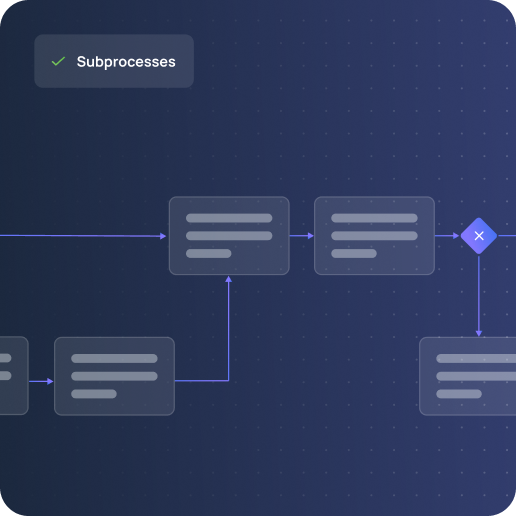
Data model
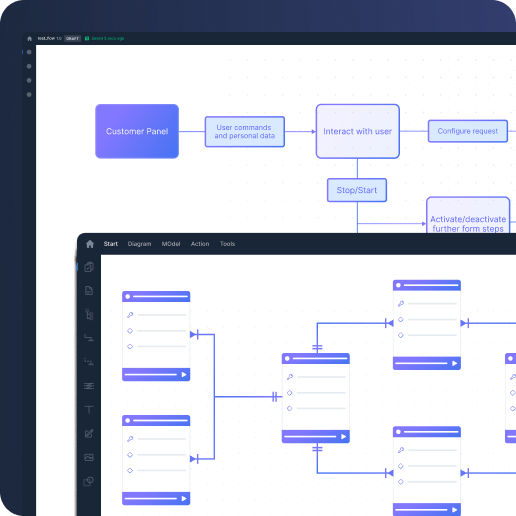
Data flow management
Data flow management is one of the most demanding aspects of process development. You need to determine from where to retrieve the data you need to execute a business process step, where you want it to display, whether it can be modified, and where it should be transferred to after the step is completed. Eximee makes it less of a challenge by providing tools to define and visualize data models and flow.
Data separation for enhanced performance
The data is not stored in the process engine but in a separate data model and pulled in specific places – e.g., on forms, in services, in scripts, in integrations, and in service calls, which means taking the load off the BPM engine.
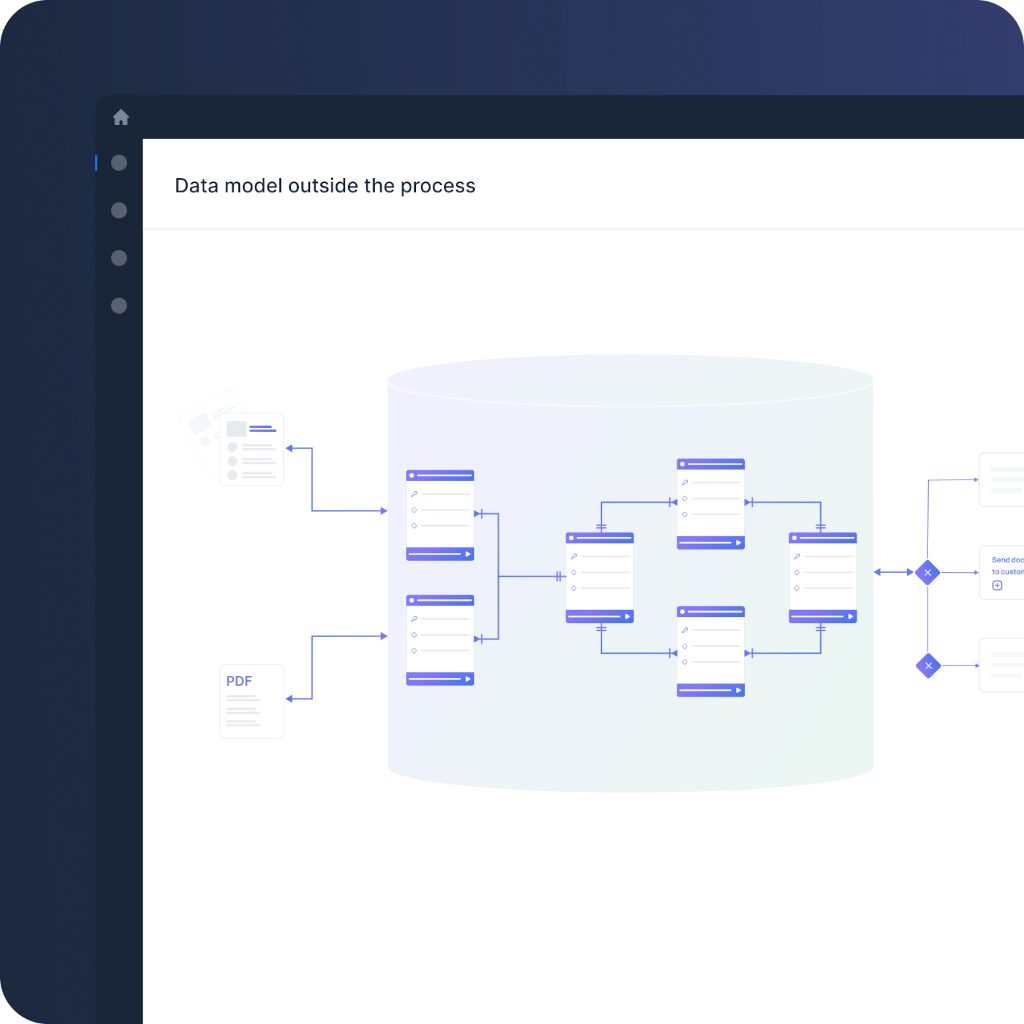
User tasks
Low-code development of user tasks
Use the cutting-edge low-code capabilities of the Eximee platform to:
- create forms for handling user tasks performed by bank employees and customers
- integrate applications supporting employees in handling their tasks
- display additional data downloaded from external systems
- define business actions to be performed by a user and improve service usability
- using Eximee Script Code to implement business logic makes user task forms even more capable
Furthermore, the Eximee platform offers the ability to manage and configure screens in the user tasks.


Task list management
You can manage the content of a task list for a particular business process step by defining:
- data that should be displayed – it clears up the task queue view and makes searching and filtering easy
- actions that can be performed within a particular task type on the list, e.g., manual confirmation of data verification
- rules for tasks prioritization
- batch task processing
Business configuration
Business configuration allows developers to specify the parameters for performing particular process steps without the need to release a new version of the process. For instance, you can define the exchange rate spread for a loan currency conversion process. It is also possible to configure the visibility of specific fields in the task list or case overview as appropriate for a given role or to define product names. It is worth mentioning that the business configuration is versioned so you can track all changes.

Automated business process steps
The Eximee platform provides an SDK for high-code and a mechanism for low-code implementation of automated steps, as well as guidelines for adding and implementing business logic using script code or microservices.
Script code
Script code is the preferred way to define the business logic of automated process steps because, compared to microservices, it provides easier delivery of changes to the target environment. In addition, the scripts are executed outside the workflow engine, which ensures stability and high performance and addresses the limitations of the script-related mechanisms provided by a given workflow engine.
The platform provides tools for script development (including snippets, editor, and automated tests). The scripts can be employed both in processes and in the user interface.


Microservices
For more advanced implementations, the Eximee low-code platform provides a framework for creating and deploying microservices, giving you infinite possibilities in terms of implementing business logic and integrating with external services written in any technology. You can develop a microservice and reuse it anywhere you need it.

Case overview configuration
As part of the process definition, you can determine what items are to be included in the case list related to a particular process and what data is displayed in the case overview.
Similarly to task lists, you define a screen for a given process, which displays comprehensive information on a case related to that process.
However, it is important to note that this data is solely presented for preview purposes and does not permit any modifications or execution of actions.
Mortgage application process for SGB community banks
Is it possible to get the loan application process up and running in 2 weeks? We have proven it is. We have digitized the application process for Safe 2% Mortgage in SGB Bank S.A. and other community banks in SGB group.

Hear it from our client

3-step implementation of the Eximee
low-code platform
How to implement Eximee in a bank?

Step 1
Discovery meeting
We discuss the current state of your processes, digitization and automation capabilities, and possible solutions.
Step 2
Analysis
Together we choose the process to digitize and develop a plan.




